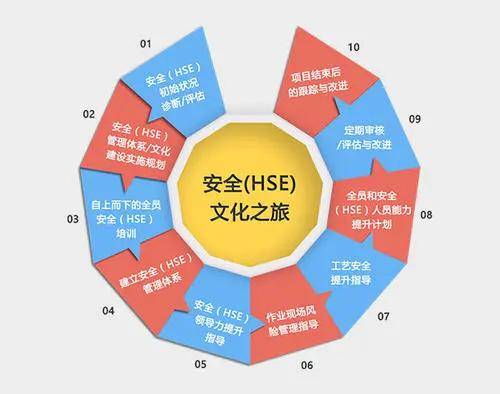that HSEMS ELEMENTS AND EXPECTATIONS
1 Leadership and Commitment.
This is the principal element in the process. It establishes the priority management places on safety and occupational health. Additionally, it sets the direction for the organization and dictates the involvement and commitment to the effort. Systems and programs that support this element include a clearly defined policy, active and visible management support, and participation in safety activities, rewards, and recognition.
2 Employee Ownership and Participation.
The goal is to achieve employee ownership and commitment to the safety improvement process. Activities that support this element include employee involvement and participation on safety teams, hazard recognition systems, off-the-job safety programs, and employee participation in safety activities such as meetings, training, incident investigations, audits, etc.3 Roles and Responsibilities.
Roles and responsibilities shall be documented, maintained, and clearly communicated. Employees understand their specific areas of responsibility, have the authority to accomplish their tasks safely, and be held accountable for fulfilling their roles in the safety process. Systems and programs that support this element include documented roles and responsibilities for all employees, S&OH team charters, and job charters.4 Safety & Occupational Health Planning.
Short and long long-term S&OH plans shall be developed that are clearly identifiable and are integrated into the business plan. Systems and programs that support this element include strategy development processes, goal setting and alignment, and actual build-down of plans for effective implementation.
文章图片
5 Occupational Health.
The occupational Health element provides for the identification, evaluation, and control of potential health hazards, thus protecting the present and future health of employees. Systems and programs that support this element include chemical, physical, biological, and ergonomic exposure assessments, control plans, medical surveillance programs, and occupational health procedures and programs.6 Behavioral Accident Prevention.
Behavioral accident prevention encourages continuous improvement through the recognition and reduction of at-risk behaviors. Systems and programs that support this element include employee training, observation of work practices, positive feedback, and behavioral metrics.7 Contractors.
Effective implementation of contractor safety systems protects Client and contractor employees and assets. Systems and programs that support this include contractor selection, training and education, auditing, incident reporting/investigations, and performance monitoring.8 Training.
【that HSEMS ELEMENTS AND EXPECTATIONS】Employees shall receive training to provide the necessary skills for accomplishing their assigned roles and responsibilities. Training systems shall provide for initial, periodic, and ongoing training. Systems and programs that support this element include employee selection, identification of employee training and development needs, employee orientation, regularly required training, operator/mechanical skill training and qualification, development and maintaining of training resources, and demonstration of proficiency.9 Mechanical and Operating Integrity.
A comprehensive mechanical and operating integrity program maximizes equipment reliability and operating discipline, thus providing a means to eliminate unplanned events. Systems and programs that support this include documentation of process technology information, process hazard analysis, operating and mechanical procedures, management of change and prestart-up reviews, inspection and tests, QA/QC, design criteria documentation, risk assessment, and mitigation systems.10 Standards and Procedures.
以上关于本文的内容,仅作参考!温馨提示:如遇专业性较强的问题(如:疾病、健康、理财等),还请咨询专业人士给予相关指导!
「辽宁龙网」www.liaoninglong.com小编还为您精选了以下内容,希望对您有所帮助:- 品牌 It's Nice That 精选出2021年度25个最佳平面设计
- 脱毛膏 警惕!你最爱用的这几种美容产品正在损伤你的皮肤 Experts reveal the products that can have surprisingly negative effects
- Moon|《战神》关卡设计师加盟新3A工作室That’s No Moon
- that|木棉道 | 中文到底有多美?请屏住呼吸(一)
- brains|Cuttlefish brains have memories that "never fade
- that|Kadensa Capital Limited: Intel singles out TSMC Samsung
- that|Kadensa Capital Limited:Stellantis performance exceeds expectations
- will|A Ranking or a Laughing Stock? – A No.1 that will go down in history
